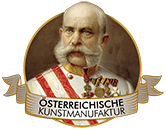Jacob Binck's hands were instruments of precision, transforming copper plates into fine lines and endowing portraits, religious scenes, and mythological depictions with rare clarity. During the height of the Renaissance, as artistic creation in Europe was being redefined, Binck moved between centers of power and intellect. His works reflect the cultural diversity he encountered on his travels between Germany, Denmark, and Poland. Binck's engravings and paintings are marked by keen observation, evident in the detailed rendering of facial features and fabrics. His portraits of noble figures and scholars not only capture outward appearance but also convey character and status, embedded in a visual language influenced by Italian and Dutch models.
Jacob Binck skillfully utilized the possibilities of printmaking to make his art accessible to a wider audience. His prints were collected and admired throughout Europe, valued for their technical brilliance and their ability to tell stories in miniature. The hands that created these works were equally adept at drawing and engraving, leaving their mark in the fine hatching and subtle contrasts of light and shadow. Binck's artistic output exemplifies the union of craftsmanship and humanism that defined the Renaissance. Today, his works are found in major collections, bearing witness to a time when art and science worked hand in hand to reshape humanity's image of itself and its world.
×




.jpg)
.jpg)
.jpg)
.jpg)
.jpg)
.jpg)
.jpg)
.jpg)
.jpg)
.jpg)
.jpg)
.jpg)
.jpg)
.jpg)
_-_(MeisterDrucke-1384402).jpg)
_-_(MeisterDrucke-1384402).jpg)
.jpg)
.jpg)
_-_(MeisterDrucke-1368941).jpg)
_-_(MeisterDrucke-1368941).jpg)
.jpg)
.jpg)
.jpg)
.jpg)
.jpg)
.jpg)
.jpg)
.jpg)
.jpg)
.jpg)
.jpg)
.jpg)
.jpg)
.jpg)
.jpg)
.jpg)
.jpg)
.jpg)
.jpg)
.jpg)
.jpg)
.jpg)
.jpg)
.jpg)
.jpg)
.jpg)
.jpg)
.jpg)
.jpg)
.jpg)
.jpg)
.jpg)
.jpg)
.jpg)
.jpg)
.jpg)
.jpg)
.jpg)
.jpg)
.jpg)






